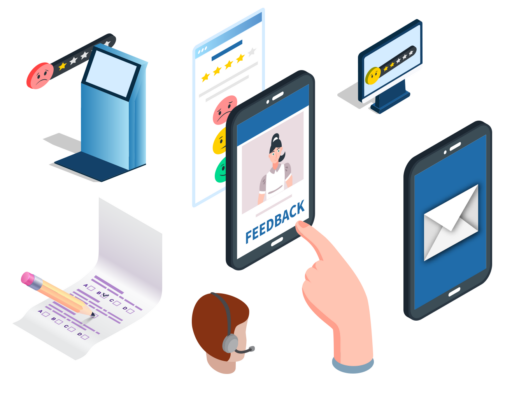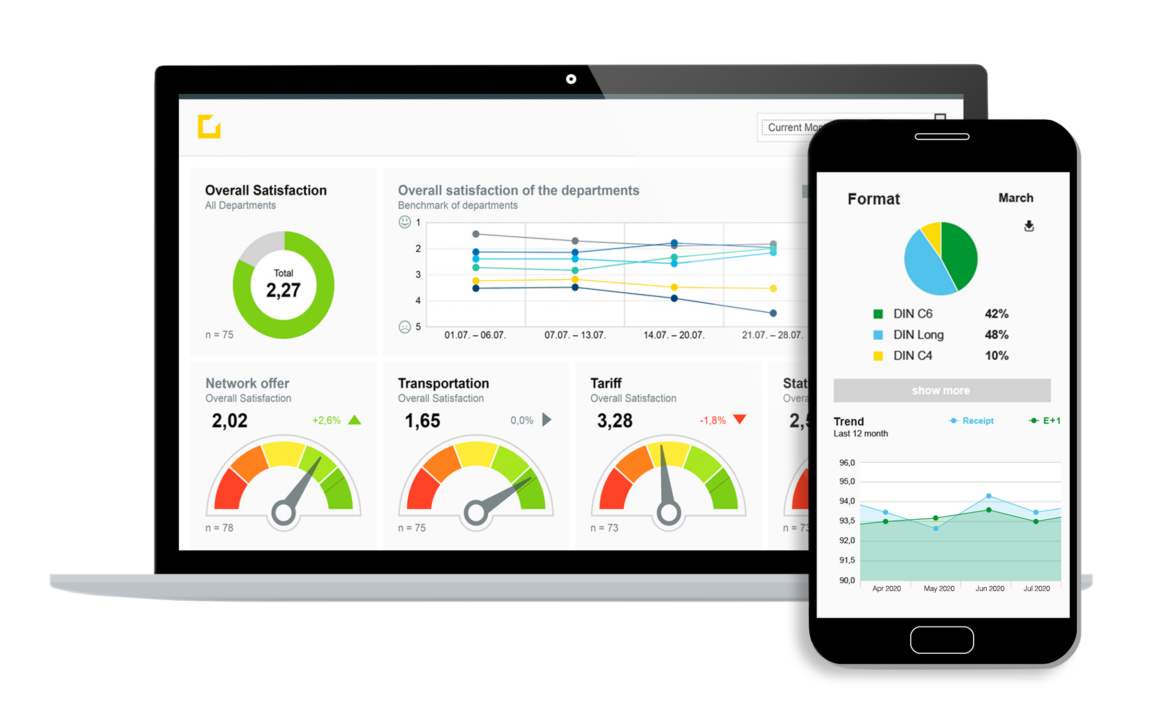Fostering Service Excellence: Leveraging Customer Experience Management Systems
Customer-centricity and service excellence are paramount for the success of service-oriented businesses. However, achieving this requires effective utilization of customer experience management systems. These systems play a pivotal role in aligning your entire organization towards improving service quality on a daily basis. As customer perception heavily influences product quality, it becomes crucial for all employees, from top-level executives to support staff, to be well-versed in enhancing service quality consistently. In contrast to the challenges posed by traditional customer satisfaction surveys, which can be complex to administer, interpret, and implement operationally, Customer Experience Management Systems offer a practical approach. These systems seamlessly integrate into everyday scenarios, involving employees, business processes, partners, and customers in your ongoing enhancement strategy.
The traditional approach to customer experience management and why it’s no longer working
Up until now, many companies have periodically commissioned their market research, quality management, or customer service departments with the task of executing process analyses or customer satisfaction surveys. These analyses often challenge the departments with a highly organizational task. How do we reach all of our customers? How do we achieve a high response rate? Which questions should we ask them? How do we evaluate the data we receive?
As a result, an extremely time-consuming and cost-intensive management report is created once or twice a year. Since this report solely focuses on the past and takes multiple weeks to fully evaluate, the results can only function as a basis for strategic decisions. These types of reports are of no great use for business operations. Moreover, due to its sheer size and exclusiveness, only a handful of employees will ever be granted access to such a report.
 The immense effort required for the execution and evaluation is rarely worth the outcome. A mere fraction of the derived data may be used to base any decisions on. In fact, these types of reports will rarely give well thought-out feedback the attention it deserves. This could be detrimental to the customer relationship as, despite having given their feedback, no changes will be made. How can a Customer Experience Management System assist in improving the situation and increasing the level of service quality?
The immense effort required for the execution and evaluation is rarely worth the outcome. A mere fraction of the derived data may be used to base any decisions on. In fact, these types of reports will rarely give well thought-out feedback the attention it deserves. This could be detrimental to the customer relationship as, despite having given their feedback, no changes will be made. How can a Customer Experience Management System assist in improving the situation and increasing the level of service quality?
5 Elements of an Effective Customer Experience Management System
In today’s interconnected world, we’re all customers. Whether ordering online or engaging with businesses, we’ve come to distinguish between exceptional and subpar service. Our interaction with companies spans various touchpoints – websites, social media, calls, even in-person visits – all weaving together into an intricate customer experience mosaic. This journey leads us through a company’s inner workings, introducing us to its processes, employees, and partners.
However, managing service quality demands understanding individual experiences, a challenge many organizations grapple with. Traditional surveys no longer suffice due to their sluggish feedback loop and fragmented data. To improve service quality, consider these 5 capabilities when selecting a CEM system.
1. Collecting and Using the Right Data at the Right Time
 Crucial is a direct, immediate, and on-the-spot survey method at each touch point so customers can submit their feedback before their experience is tainted with time. Make it easy for your customers by using multiple survey channels. The positive side effect: unsatisfied customers are recognized immediately, which allows you to win them back with your quick reaction times. By letting as little time elapse as possible, you avoid gathering negative reviews online or on social networks and are contributing to the development of a satisfied customer base.
Crucial is a direct, immediate, and on-the-spot survey method at each touch point so customers can submit their feedback before their experience is tainted with time. Make it easy for your customers by using multiple survey channels. The positive side effect: unsatisfied customers are recognized immediately, which allows you to win them back with your quick reaction times. By letting as little time elapse as possible, you avoid gathering negative reviews online or on social networks and are contributing to the development of a satisfied customer base.
Keep it smart and simple – create short, straight to the point surveys. The most important part is to continuously receive precise information about certain indicators, such as the customer recommendation score, 5-star ratings, and yes or no questions, and not the receipt of comprehensive market research for your business’ next forecast.
2. Viewing Reports and Analyses of KPIs in Real Time
As soon as you’ve collected the right data, you have all you need to draw effective conclusions. To assist you in evaluating the data, automatic analysis tools process the data against pre-defined performance indicators. Those indicators are then assigned per touchpoint. Each touchpoint and the organization as a whole are assessed separately and in real time.
Through the daily collection of data, informative charts will emerge within just a few weeks, which will provide valuable insight into business processes and service quality. Scorecards are created for each different touchpoint and for the organizational structure. Dashboards depict the continuous development of certain indicators by using charts and showing trends. Former white spots on the process map were made transparent in the live evaluation, simplifying the maintenance of the data.
Current Cloud technologies enable an effortless implementation of such indicator systems within the Customer Experience Management System. Data is ascertained locally and made available in real time, fully evaluated, and on management’s and every employee’s tablet or smartphone.
3. Sharing Results and Involving the Entire Organization
Even the greatest charts, trends, and analyses won’t help you if no one’s able to see them. A good Customer Experience Management System meets one condition: the data and analyses are made available to every employee, so every response is seen and heard. When employees read a customer’s response, they’re automatically motivated to do their best on a daily basis. Everyone likes to hear how much customers value their contributions.
As mentioned earlier, current Cloud solutions can grant employees instant access to the data without further added IT effort. However, not everyone has to/should see absolutely everything. Too much information is a burden. The only relevant figures are the ones concerning such scorecards and indicators that directly affect the respective employee.

Thanks to mobile technology, everyone can access the evaluation anytime and anywhere. In order to increase the efficiency of the data for your daily business, good Customer Experience Management Systems come with collaboration tools. These tools make it easier to directly discuss results and to derive the right measures from them.
4. Deriving Targeted Decisions from Your Data
Data and analyses are only as good as the support they lend in improving the service quality. The goal of quality management (and the organization’s management) is the adjustment of processes to meet the customers’ needs and the continuous improvement of service and innovations in order to generate new business and customer loyalty. A Customer Experience Management System can be a vital platform, as many management and quality management systems like the ISO 9001:2008 operate according to Six Sigma or Total Quality Management approaches. The decisive factor of every Customer Experience Management System is the voice of the customer. The CEM directly represents the voice of the customer. The information is precise and easily located within the system, which allows management to derive the right decisions from the data.
Through the use of collaboration systems, customer complaints registered by the Customer Experience Management System can be assigned as support tickets to customer service employees or call centers in order to begin damage control right away. These support tickets can also be seen as a task for management or quality management to optimize certain processes. This way, flawed touchpoints are recognized quickly and can be taken care of.
5. Monitoring the Effectiveness of Taken Measures Day by Day

This is what KPIs could look like in a CEM system: Sample view of the Spectos Real-Time Performance Management™ platform
The main advantage of Customer Experience Management systems that traditional methods don’t offer is the ability to monitor and steer data on a day-to-day basis in customized dashboards of the Spectos Real-Time Performance Management™ platform. If indicators are set and the data is recorded correctly, the CEM will work like an alarm for your service quality. If certain indicators sink below a determined boundary, the system automatically sends out an alert to chosen employees. These employees can then solve the problem as quickly as possible, which leads to the effective improvement of the service quality. The system provides management levels with periodic benchmarks for the service quality, making weak spots and top performers alike easily recognizable.
Empowering Daily Service Quality Enhancement: Embracing Customer Experience Management Systems
In the realm of enhancing service quality, a collaborative effort among customers, employees, and partners is at play every day. Unlike conventional customer satisfaction surveys, the utilization of customer experience management systems offers a seamless way to consistently monitor and enhance service quality, facilitating swift adjustments.
Harnessing the power of these systems brings customers and their experiences directly into the fold of daily service quality improvement. The measurement of service quality becomes a transparent, dependable, and easily understandable process, thereby enabling effective enhancements. A distinctive advantage of customer experience management systems is their departure from traditional methodologies, enabling the daily oversight and governance of service quality.
Are you prepared to embark on the next phase?
Go to Our Solutions for Customer Experience Management Contact us for your CEM System
Case studies, new trends, reports & industry news – it’s all on our LinkedIn channel!



